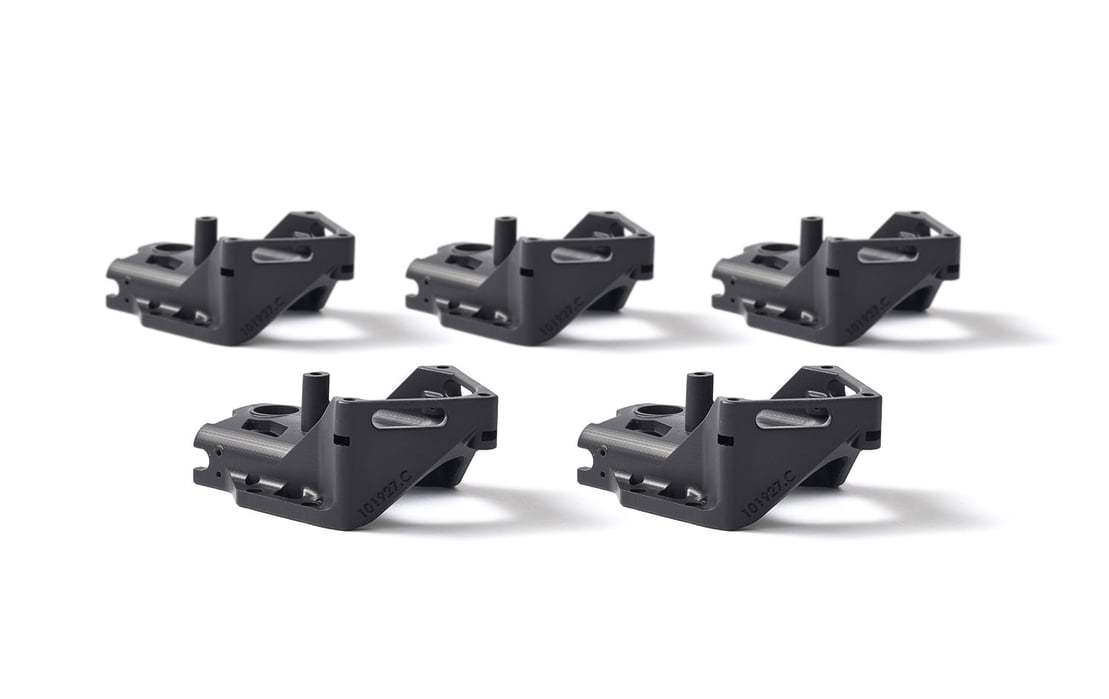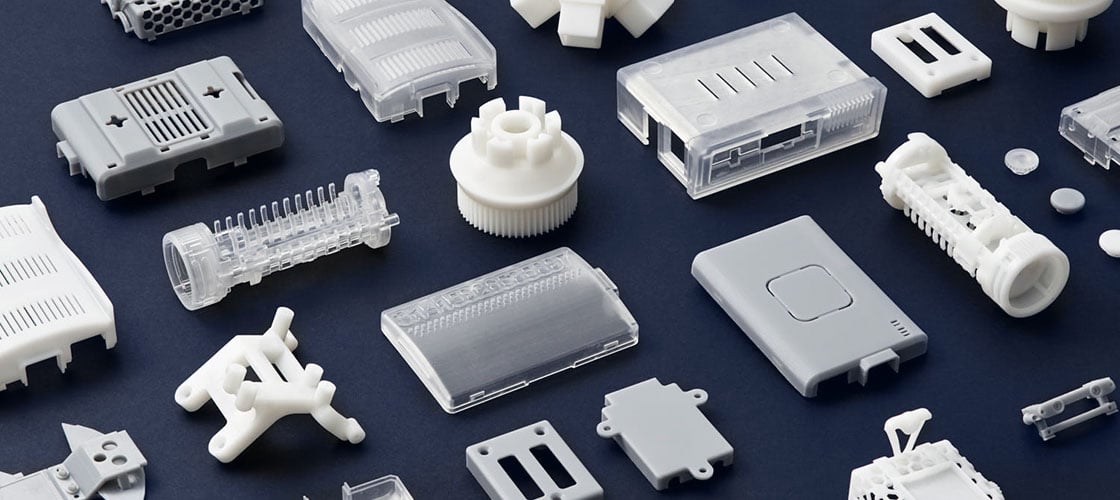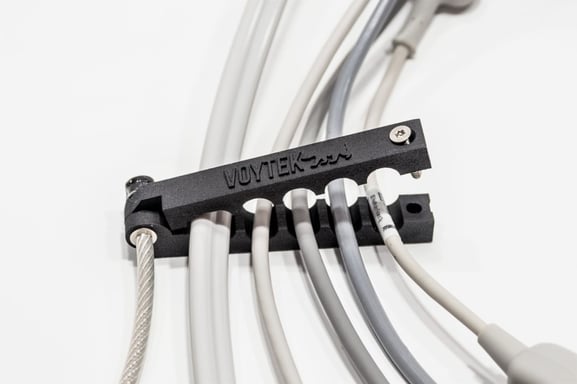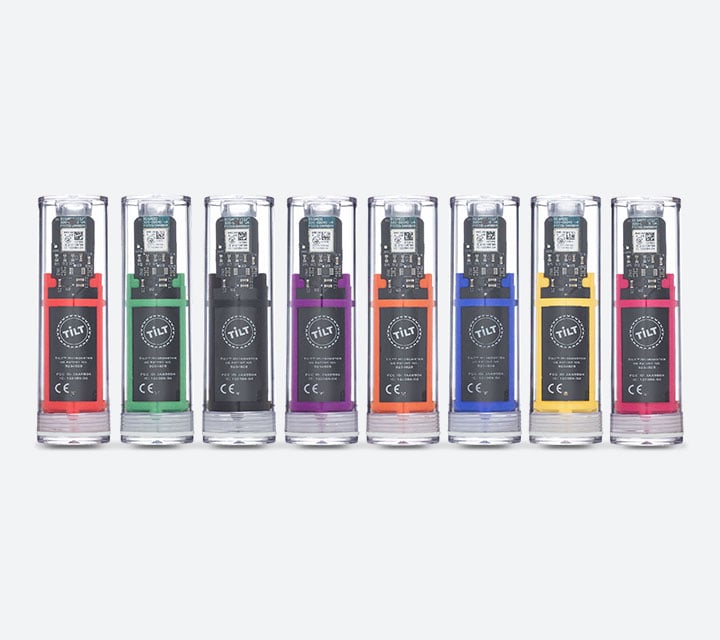
As patents ran out on 3D printing and the technology blazed into the mainstream around 2014, global manufacturing began to turn from conventional, predictable factory production toward something unexpectedly new, original, and undeniably exciting. Offering users at every level the ability to innovate like never before, the magic of 3D printing began to light up the world with promise and hope too—especially in medical applications for revolutionary medical models, devices, and implants that could offer better quality of life for the human race, as well as save lives in some instances too.
Not only were incredible new products being made in a layer-by-layer fashion, but soon an entire billion-dollar economy sprang up with 3D printers capable of making industrial, high-performing parts for the most critical of applications like aerospace and medicine. Materials science abruptly became even more vast, and increasingly more interesting as interested parties began to take the deep dive into a novel world of resources that is still continually expanding, from versatile thermoplastics to the strongest metal.
Mainstream 3D Printing Soon Turned to End-Use Parts
Prior to all the hoopla surrounding the world of additive manufacturing as licenses expired, the technology was being used quietly behind the scenes by a select number of big names with big resources—and no eagerness to share their secrets while engaged in research and development. NASA comes to mind instantly, as a major aerospace organization and space leader that began using 3D printers in the 90s for rapid prototyping.
While 3D printing may have at first only been considered a sophisticated iteration tool, the technology quickly evolved into a production method for making complex geometries never before possible with traditional manufacturing like CNC machining or injection molding. Industrial users quickly discovered its potential upon testing the limits of 3D design and all that came afterward. With such overwhelming curiosity and the constant push to create new objects, came the ultimate discovery of a tool that allows for infinite innovation.

Reaping the Rewards is Possible Without Huge Investments
While rapid prototyping may still be part of the process, today it has been superseded by the knowledge that 3D printing has the capacity to make strong, highly customized parts on demand and in high volumes. In working with Shapeways, this also means that businesses of all sizes may realize an entirely new future and trajectory in terms of production of quality parts and products in bulk printing—without having to train staff or invest hundreds of thousands of dollars in industrial equipment.
That FDM 3D printer for the desktop at home or the office may allow for a good start in terms of product development—or even, yes, the replication of a necessary household utensil as foretold, that is not the scenario for rapid production in mass volumes; however, Shapeways bulk 3D printing solutions give customers access to high-volume 3D printing using at the most advanced manufacturing technology and materials like Selective Laser Sintering (SLS) using popular materials like Nylon 12 [Versatile Plastic] or PA11.
Mass Customization and Production Too
For Shapeways customers like 67 Designs, the appeal of 3D printing materials, and a dedication to the technology overall outweighs the benefits of traditional manufacturing. For CEO Paul Stener, there has always been a strong adherence to both quality in design and conformation, which he considers to be the main requirements for creating quality products.

“Sometimes you can look at a product and it seems really cool, but during the manufacturing process or due to the materials that have been used, it doesn’t last very long,” said Stener. “That perhaps is a sign that there wasn’t good conformance to the design.”
Stener could have chosen to move on to mass production with injection molding but was sold on 3D printing due to their customized rugged design for an iPad mount, a luxury vehicle accessory mainly used in off-roading vehicles with a tendency to traverse remote and incredibly beautiful areas. Stener also wanted to continue using Nylon 12 [Versatile Plastic] due to the quality surface finish available.
While highly customized products may be offered in small volumes on demand, once they are highly desired by a customer base, Shapeways can mass produce those same parts too. Powder-based technologies like SLS are conducive to mass production because:
1. There is no need for supports.
Due to unsintered powder bolstering up and naturally supporting parts during production, dealing with the headaches of planning for support mechanisms are eliminated from the design process—offering much greater freedom regarding design and innovation.
2. Nested bulk builds are now possible.
Shapeways engineers do not have to plan for supports while packing parts in each build. This makes the process of nesting much more streamlined, and allows for hundreds and even thousands of parts to be 3D printed in one build.
No Tooling Saves Time and Expense
The process of manufacturing expensive tooling is eliminated during 3D printing, along with jigs and fixtures. This also reduces additional setup and costs, streamlining the process further—even for massive production jobs. In other cases, faster, more affordable tooling may also be created for traditional manufacturing, like creating economical, customized 3D printed molds.

Shapeways customers like Voytek Medical weighed out their options carefully when comparing their prospects between 3D printing and injection molding, as an example. Because they did not want to spend thousands of dollars of precious capital, Voytek chose to move from desktop 3D printing and the idea of injection molding to work with Shapeways instead for additive manufacturing of specialized devices to organize medical cords. The decision ultimately brought them great success as they were able to get large batch orders quickly—and with true accuracy and repeatability, parts were received each time without cosmetic or build quality flaws.
Greater Latitude in Making Design Changes to Complex Parts at Any Time
Customers like Tilt Hydrometer took full advantage of the ability to 3D print over a hundred iterations of their hydrometer used to measure the fermentation process while home brewing craft beer. During manufacturing of the end-use parts, they also enjoyed the full range of colors available with Nylon 12 [Versatile Plastic], 3D printing through SLS technology.

“I ended up learning a lot about technology,” said CEO Noah Neibaron. “I was passionate about brewing, and I really wanted the business to take off.”
“Shapeways was a large part of that. They were really great with fast service, quality, and the range of colors which actually ended up affecting our whole product line because we now make eight different colored 3D printed tilts—and those are the colors Shapeways sells.”
Expanded freedom in design is one of the greatest advantages in additive manufacturing, and that is equally true for both prototyping and production. In traditional manufacturing if a part was made with a defect or needed a slight change, that could mean long periods of time in between the re-design process and waiting on third parties to fix errors or sudden decisions to make changes. With 3D printing if there is a problem or if the manufacturer suddenly takes a different turn, the 3D model can be swiftly changed without waiting on anyone—and production can resume quickly.
Get Products to Market Faster
Adhering to the old adage that time is money, 3D printing becomes the best option for businesses of all sizes and types—especially when they may be in the process of creating an innovative product and need to get to market as soon as possible in hopes of watching their new brand take off as planned. From the concept and design phase to prototyping and then manufacturing, 3D printing offers new opportunities for businesses interested in creating and customizing new parts with considerably less constraints, and less waiting on third parties in the initial stages. Changes can be made as quickly as a few clicks at the desktop rather than waiting for weeks or even months. In many cases, prototypes and parts can be manufactured exponentially faster, and with less waste of materials and resources.
About Shapeways
Contact Shapeways now to enjoy the benefits of advanced technology and materials for manufacturing creations with accuracy, complex detail, and no minimum or limits in terms of mass customization or single part orders. Shapeways has worked with over 1 million customers in 160 countries to make over 20 million parts! Read about case studies, find out more about Shapeways solutions, and get instant quotes here.


